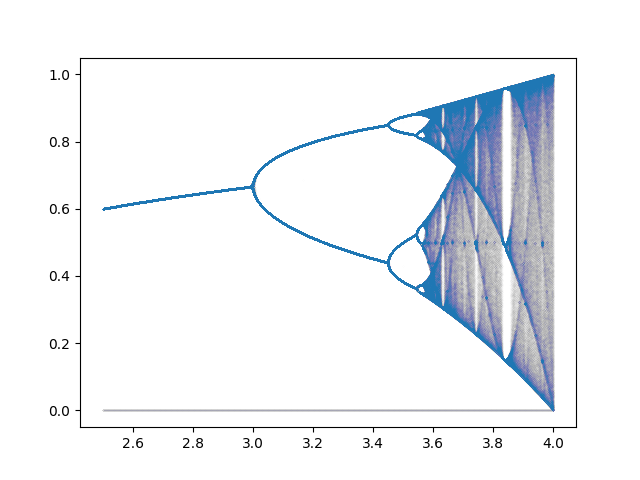
We study a class of binary treatment choice problems with partial identification, through the lens of robust (multiple prior) Bayesian analysis. We use a convenient set of prior distributions to derive ex-ante and ex-post robust Bayes decision rules, both for decision makers who can randomize and for decision makers who cannot. We find ex-ante and ex-post robust Bayes decision rules do not tend to agree in general, even without randomization. We also find randomized treatment assignment can be optimal for both ex-ante and, more surprisingly, ex-post problems, hence excluding randomized rules from consideration is with loss of generality. We apply our results to a stylized problem of policy implementation with external validity concerns (Stoye 2012), and to the aggregation of data generated by multiple RCTs in different sites to guide a policy choice in an unexperimented location (Manski 2020; Ishihara and Kitagawa 2021).
We present a simple algorithm for obtaining "epsilon-minimax" solutions of statistical decision problems where the statistician is allowed to choose randomly among I decision rules. The paper applies a type of Multiplicative Weights algorithm to different minimax problems in the economics literature. An empirical application to the problem of optimally selecting experimental sites to maximize the external validity of an experimental policy evaluation illustrates the usefulness of the suggested procedure.
Elliott, Mueller, and Watson (2015) suggested a numerical algorithm for determining a \emph{nearly} most powerful test of a given size in a general class of nonstandard hypothesis testing problems. We show that a slight variation of their algorithm follows a stochastic mirror descent routine and give resulting theoretical guarantees that this alteration yields.
From May to July 2023, I was a Research Assistant at Columbia Business School working under Professor Jing Dong. The premise of the project was the increased prevalence of AI diagnostic technologies (such as IDx-DR) has called into question how current diagnostic workflows can be altered in order to improve patient outcomes. This project took the approach of utilizing stochastic modelling and results in queueing theory to provide a proposed solution to the issue. At the end of the program, I summarized my results in a presentation given to a crowd of fellow RAs, PhD students, and faculty. The presentation, written in LaTeX Beamer, is attached below.
From January 2022 to January 2023, I was an Undergraduate Researcher at the Labor Dynamics Institute at Cornell University under Professor Lars Vilhuber. In this work, I replicated numerous economics research papers submitted to a variety of American Economics Association Journals (e.g., AEJ, AER, AEP, etc.), making use of version-control softwares such as GitHub, Bitbucket, and Code Ocean. I also made heavy use of Stata, R, Python, and Matlab. Aside from replication of papers, I also contributed to the replication template used by all of the research assistants in the Replication Lab. The GitHub to said template is linked below.
From June to August 2022, I was a PRIMO Research Fellow at the Harvard Business School, paired with Professor Kyle Myers. In that work, I performed preliminary synthetic control regressions on clinical trial data to answer the following question: Does the market overreact to deaths in gene therapy clinical trials? The position culminated in a presentation given to PRIMO fellows, as well as graduate students and faculty of HBS. The presentation, written in LaTeX Beamer, is attached below. The slides show some of the limitations of synthetic control methods.
I recently compiled a very brief set of notes about normal numbers mainly based on other sources I came across as I learned about normal numbers.
I have coded a Python program to graph the Logistic Map and its chaos and windows. It works by going a certain number of iterations out for initial conditions iterated through an equally spaced set of points between 0 and 1 as the parameter r changes.

On December 8th, 2022, I gave a brief lecture on Nonstandard Analysis to undergraduates, graduates, and mathematics faculty. In this lecture, I constructed the hyperreals, discussed the powerful Existential Principle, and briefly motivated possible applications of nonstandard analysis to large economies.
Together with James (Ruogu) Zhang, I researched and later gave a lecture to a group of math undergraduates as well as math faculty on the Axiom of Choice. This lecture not only motivated the existence of the Axiom of Choice, but also consisted of elaborate proofs demonstrating the equivalence of the Axiom of Choice to other assumptions, such as Zorn's Lemma, the Well-Ordering Principle, every vector space having a basis, and also a discussion of non-measurable sets, with the Vitali Set being used as a chief example. We also utilized transfinite recursion in some of our equivalence proofs.
I have written a short paper that derives the formula for the hyperbolic angle in terms of the coordinates of the unit hyperbola.